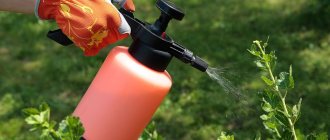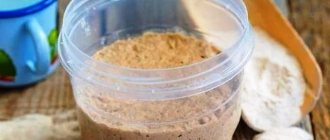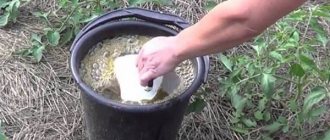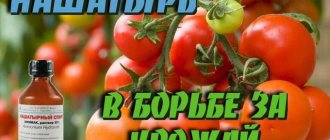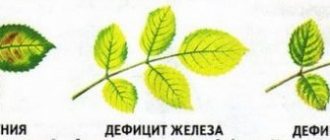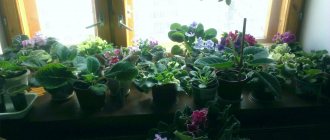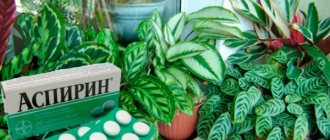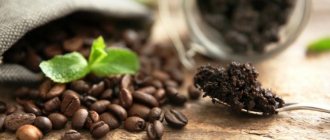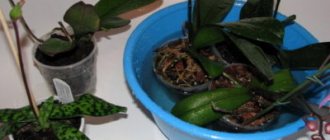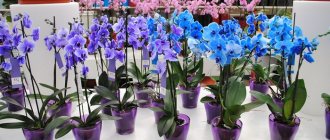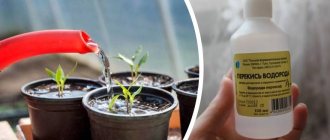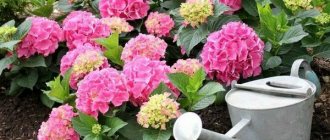Iodine is needed not only by the human body, but also by all plants. With a lack of this element, the ovaries rot and fruiting is delayed. But feeding plants with iodine must be carried out according to strict rules and the dosage must be observed.
In the garden, vegetable garden and flower garden, iodine is used not only as a fertilizer, but also as an insecticide. It also suppresses the development of viruses, bacteria and fungi. And this is not all the beneficial properties of iodine. When watering plants with iodine solution, the soil is disinfected and at the same time the immunity of the crops is strengthened.
Iodine for plants
In agricultural technology, root and foliar feeding with iodine is used.
Iodine deficiency
affects the growth and development of all plants. Iodine has a good effect on the yield, weight, color and taste of fruits. Promotes better absorption of nitrogen compounds.
Iodine is also used to boost the immunity of home flowers by pouring a solution of 3 drops of iodine per 3 liters of water. Water with this solution 3 times during the summer with the same interval between waterings.
The plants will be healthy, beautiful and blooming. Do not increase the proportion, this will lead to yellowing of the leaves and flowers - an excess of iodine.
Common Mistakes
Unfortunately, newcomers to agriculture make mistakes. They concern both dilution (non-compliance with doses) and treatments.
You can avoid them if you remember:
- It is not recommended to treat polycarbonate with iodine. The material in combination with iodine liquid is capable of releasing harmful substances.
- An antiseptic bought at a pharmacy will only help as a preventive measure. If the infection with a fungus or other disease is extensive, then serious treatment with special drugs is required. And use iodine to enhance their effect.
- Make sure there is no excess iodine. Over the entire growing season, 2-3 treatments with the selected product are sufficient. Otherwise, the fruits will have an increased concentration of the drug. This will have a negative effect on the human body.
Iodine use in the garden
Iodine is very useful for all garden crops. To increase the immunity of vegetable crops and prevent the appearance of pests and various diseases, 2 types of iodine solutions are used.
Solution No. 1
This solution should be applied before the formation of ovaries on the plants. Add 20 drops of iodine to 10 liters of water; this solution can be used once every 2 weeks.
Solution No. 2
This solution is used during the formation of ovaries. For 10 liters of water add 20 drops of iodine, 15 tbsp. l. hydrogen peroxide 3%, 1 liter of whey. Can be used once every 3 days.
Thanks to such solutions, the plants will be healthy, harmful microorganisms will die, and the plants will produce a good harvest.
Microelement properties
The substance is widely used in vegetable growing and horticulture as a fertilizer. It promotes the production of useful amino acids, ensures normal metabolism within the plant organism, and is responsible for the process of cellular respiration.
Iodine is useful for plants because it:
- fights infections and parasites;
- strengthens the immunity of seedlings;
- disinfects the soil;
- saturates plant cells with vitamin C;
- participates in nitrogen synthesis;
- eliminates pathogenic microorganisms.
Among the main advantages of iodine-based fertilizer are accessibility and effectiveness.
This type of fertilizer can be purchased at any pharmacy. The product is safe and does not have any negative effects.
Iodine for tomatoes
When growing vegetable seedlings before transplanting into the ground, water with a solution: 1 drop of iodine per 3 liters of water.
When watering tomato seedlings in this way, the flower clusters develop faster and are more branched, with more ovaries. The fruits are larger and ripen several days earlier.
After planting seedlings in the ground, it is recommended to water with a solution: 3 drops of iodine per 10 liters of water - 1 liter per plant.
Use for fruit trees
Fruit trees are constantly attacked by aphids; they need feeding with iodine. Treatment against aphids is carried out with the same solution as for tomatoes, and trees are treated every 10 days.
The solution will help control pests and diseases of fruit trees and shrubs. Iodine is not only a remedy in the first aid kit, but also an excellent helper for plants. When using prepared solutions, strictly adhere to the recipes and doses, then your crops will be healthy, blooming and beautiful.
Iodine for cabbage
When forming a head of cabbage, you need to prepare the following solution: 40 drops of iodine per 10 liters of water. Water the cabbage at the root - 1 liter of iodine solution per plant. To spray cabbage, mix 10 liters of water and 5 drops of iodine - prevent aphids and fight rot.
If young zucchini ovaries begin to rot, there is a lack of iodine in the soil. Dilute 10 drops of iodine into 10 liters of water and water the bushes.
Video - Iodine for the garden
Advantages and disadvantages
One of the main tasks of iodine is its active participation in photosynthesis. It also promotes oxygen enrichment and helps normalize metabolic processes at the cellular level: nitrogen absorption, protein synthesis. The beneficial effect is noticed immediately, as green mass increases and the color of the foliage noticeably improves.
If vegetable or flower crops lack iodine, this is noticeable by:
- reduction in yield as a percentage;
- fruit ripening is delayed, and the harvest itself is small and deformed;
- weakened immunity;
- suspension, developmental delay.
Some complex fertilizers contain iodine. You should ask about the availability of such a component immediately at the time of purchase. If you couldn’t find a fertilizer/iodine-containing product, a regular medical product will do.
The result of using a recipe with iodine prepared at home will be:
- providing protection from fungal diseases not only to plants, but also to soil;
- improving the quality of products: appearance, shape, taste;
- increasing the storage duration of the harvested crop;
- beneficial effect on the functioning of the human body;
- strengthening the immune system and accelerating growth, development, fruiting, and ripening of fruits.
There are also disadvantages of application. Do not forget that the iodine solution purchased at the pharmacy consists of water and alcohol in a ratio of 1 to 5. And there is just more ethanol (92-95%). At this dosage, it kills the plant and causes severe burns.
Therefore, during the preparation of the working solution, the recipe and the ratio of the components are carefully studied. Only in diluted form is it permissible to treat green spaces of all types.
Iodine use against diseases
Powdery mildew on cucumbers
Powdery mildew that appears on cucumbers can lead to plant death. To avoid this, it is necessary to treat the cucumbers with a solution containing iodine. Add 1 drop of iodine to 1 liter of milk. We spray cucumber leaves with this solution once every 7 days.
For the prevention of late blight
and to get rid of crown rot, use a solution: 10 ml of iodine per 10 liters of water. Spray tomatoes, peppers, and eggplants.
Tips for gardeners
An indispensable assistant for gardeners is iodine. Thanks to its antiseptic properties, it perfectly plays the role of an effective fertilizer, safe and beneficial for the earth. A distinctive feature is its excellent immunostimulating effect. After using iodine solution in vegetable beds and flower beds, there is not only an increase in yield and improvement of green mass, but an increase in the shelf life of fruits.
Spring iodine fertilizing can benefit absolutely all plants. However, seedlings planted in open ground may not tolerate such a powerful fertilizer immediately after transplantation. Seedlings require an adaptation period. Only mature seedlings should be fertilized. However, an aqueous solution of a pharmaceutical substance can be used immediately before planting: 2-3 days before transplanting, the soil is spilled, due to which the land area undergoes a disinfection process.
Another important tip is to apply fertilizer based on iodine solution for plants only after thoroughly moistening the soil.
During the dormant period of the plant, such fertilizing is excluded, otherwise the root system may burn.
The mechanisms of the effect of iodine solution on the processes of growth, development, flowering and fruiting have not yet been fully studied. Assumptions are made, and they are based on the likelihood of the substance’s participation in coordinating the work of enzyme systems. Whether this is true or just an assumption is difficult to judge. But we can say with confidence that iodine supplementation is beneficial for both home and garden plants.
Iodine application against pests
Pests such as weevils and chafer larvae are afraid of treatment with iodine solution.
As a preventive measure against cockchafer larvae
prepare a solution: 20 ml of iodine per 10 liters of water, water 1 liter for each bush (when watering, for example, strawberries, perennial flowers).
If the larvae harm young currant bushes, pour 5 liters of the same solution per bush. Water with this solution 2 times a season in spring and autumn (August).
If you see that the plant is dying or withering, water it 3 times with an interval of 5 days with iodine solution: 20 ml per 10 liters of water. Water in the evening, trying not to get it on the leaves.
Prevention against the appearance of weevils
– treatment of a strawberry plot in early spring (when the soil is still covered with snow) with a solution of 1 tsp. iodine per 10 liters of water.
Video - Using iodine in the fight against cockchafer larva
Features of use in greenhouses and open ground for vegetables
You can purchase iodine either medically, then dilute it according to the recipe, or in the form of a special development - Farmayod Disinfectant.
The proposal for gardeners involves the use of a product to disinfect equipment, soil, and plants, as it has a fungicidal, antiviral and bactericidal effect.
The disinfectant also needs to be diluted, despite the fact that the concentrate is a 10% solution. To obtain a working solution, the ratio is: 1 liter of water + 10 ml of concentrate.
Farmayod cannot be used for home recipes. They take exclusively medical, where the concentration is 5%. The standard working fluid is made at the rate of adding 1-2 drops of iodine per 1 liter.
To prepare the soil in greenhouses and open areas, after choosing a solution, water the soil. After 2-5 days, seedlings can be planted.
If it is necessary to disinfect the greenhouse, choose a standard mixture. Wet a natural fabric and wipe the surface from the inside. Wooden, glass and metal elements are subject to processing.
Important! All garden tools must be disinfected regularly. Especially if plants are pruned. This includes not only pruning shears, but also saws, shovels, and knives. Before starting work, they are wiped with iodine or manganese solution. Therefore, it is recommended to stock up on liquid in advance.
Iodine for strawberries
Strawberries are treated with an iodine solution after flowering to combat weevils and May beetle larvae, and the appearance of rot on plants.
Prepare the solution
10 ml of iodine per 10 liters of water, for sticking add 2 tbsp. l. liquid soap. Stir and spray the bushes and berries, and also water under the plants.
As a preventive measure, you can water the plot of land where strawberries grow in early spring with the same solution.
To get rid of aphids on the leaves of bushes and trees, use the following solution: 1 ml of iodine per 1 liter of milk, spray once every 10 days.
What is its safety?
The toxicity and safety of iodine are rather relative concepts. Indeed, if dosages are not observed, the product exhibits properties that are toxic to living organisms. If it enters the digestive tract, the drug has a toxic effect . In this case, the cardiovascular and genitourinary systems suffer. In some cases, death is possible.
When spraying plants with a working solution, you need to wear glasses to protect your eyes. All exposed areas of the body are protected by work or protective clothing. If all precautions are taken correctly, iodine solution is safe.
Feeding seedlings after planting in spring
When planting a rose seedling, the hole is filled with fertilizers according to the following scheme:
- humus or rotted manure 5 kg;
- wood ash 1 cup;
- complex mineral fertilizer 2 tbsp. spoons.
All components are mixed with soil, and a rose is planted in this mixture. This amount of nutrients is enough for the development of the plant until next spring. Additionally, the rose is not fed.
In spring, the feeding scheme for young roses is no different from fertilizing adult bushes.
